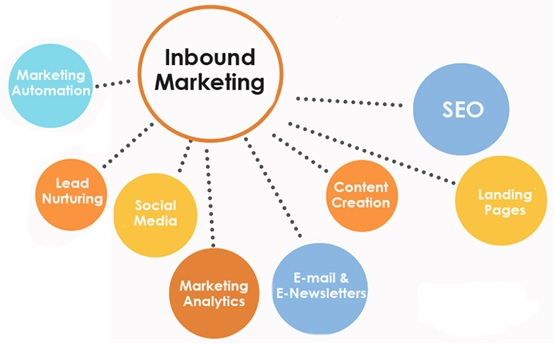Inbound marketing: What Is It?
Let’s examine inbound marketing’s definition. Inbound marketing, to put it simply, is any marketing strategy that attracts potential customers. In simple terms, you are attracting your audience rather than trying to convince them to buy your company’s products, campaign, message, or items. It draws the buyer into your brand or sales pitch for this reason, which is why it’s frequently referred to as “pull” marketing.

Definitions of inbound vs. outbound marketing
Many people think of inbound marketing as a more sincere and organic method to engage with and attract customers. This is as a result of its lack of focus on continuous calls to action and generic advertisements.
A business actively attempting to approach and entice potential clients is known as outbound marketing, in contrast. This is frequently done to a broad audience that hasn’t been selected or studied specifically.
This does not, however, imply that it is a negative sort of marketing, as strategic, higher funnel, outbound marketing can assist in reaching people who can then be targeted utilizing inbound marketing strategies for further refinement. However, keep in mind that outbound marketing alone rarely generates a high return on investment.
You probably have brands in mind that regularly engage only in outbound marketing techniques; perhaps you’ve found the identical flier in your mailbox one too many times.
These brands can be losing out on a lot of opportunity and sales if some solid and sincere inbound marketing techniques aren’t added.
Inbound Marketing Varieties
Inbound marketing can cover a wide range of marketing techniques because it’s about who you target and how.
Various inbound marketing models include:
- PPC and SEO
- Press reports
- Blogs
- Outreach to social media influencers
- Affiliates
- Ebooks with video content
- Email invitations
- Topic clusters and pillar pages
- Infographics for newsletters,
webinars and podcasts - Research findings
Because there are so many different kinds of marketing channels that may be used with inbound marketing, it’s critical to organize everything into a technique. This will result in enduring, sincere client encounters that can support corporate growth.
The key components of inbound marketing include:
Attract: This stage involves bringing in the right target audience through various channels like SEO, PPC, social media, blogs, videos, etc. Researching relevant keywords and trends can help in optimizing content for attracting the right audience.
Engage: Once potential customers are attracted, the goal is to build on their engagement by offering valuable content and solutions to their needs. This can help establish the brand as an authority in the industry and nurture the relationship with potential customers.
Delight: Even after a customer makes a purchase, the engagement doesn’t end. Inbound marketing focuses on continuing to provide value and support to customers, thus building trust and loyalty.
Inbound marketing can include a wide range of marketing methods, such as SEO, content marketing, social media, influencer outreach, email marketing, and more. The strategy involves understanding the target audience, creating valuable content, choosing the right platforms, and analyzing and optimizing the results for continuous improvement.
Benefits of inbound marketing include:
Cost-effectiveness: Inbound leads tend to cost less and have higher conversion rates compared to outbound leads.
Brand awareness: Regularly creating valuable content helps educate customers about the brand and establishes trust and credibility.
Lead generation: Effective inbound marketing can generate more traffic and leads for a business.
Alignment of sales and marketing: Inbound marketing content can be aligned with the sales process, facilitating a more productive flow of information between teams.
Permanent content: Digital inbound marketing content remains online indefinitely, providing a lasting impression and allowing potential customers to view it at their convenience.
In summary, inbound marketing is a customer-centric marketing approach that focuses on attracting potential customers through valuable and relevant content. It is referred to as “pull” marketing because it draws customers in rather than pushing promotional messages onto them. In contrast, outbound marketing involves actively reaching out to potential customers through various means, which can be less targeted and more intrusive.
The types of inbound marketing methods are diverse and can include SEO, PPC, content creation through blogs, social media, videos, ebooks, and more. The inbound marketing methodology follows three main steps: attract the right audience, engage with them by providing solutions to their problems, and continue to delight and support them even after the purchase.
To implement an effective inbound marketing strategy, businesses should define their goals and target audience demographics, provide content throughout the customer lifecycle, choose the right platforms to engage with the audience, and create a content calendar for consistency.
Inbound marketing offers several benefits, including cost-effectiveness, brand awareness, traffic, and leads generation, alignment of sales and marketing efforts, and the permanence of digital content, which remains online indefinitely.
Overall, inbound marketing is worth the effort as it provides a more authentic and meaningful way to connect with potential customers, resulting in better ROI and building lasting customer relationships. By using inbound marketing strategies in combination with appropriate marketing tools, businesses can engage both new and existing customers while establishing a strong brand reputation.
